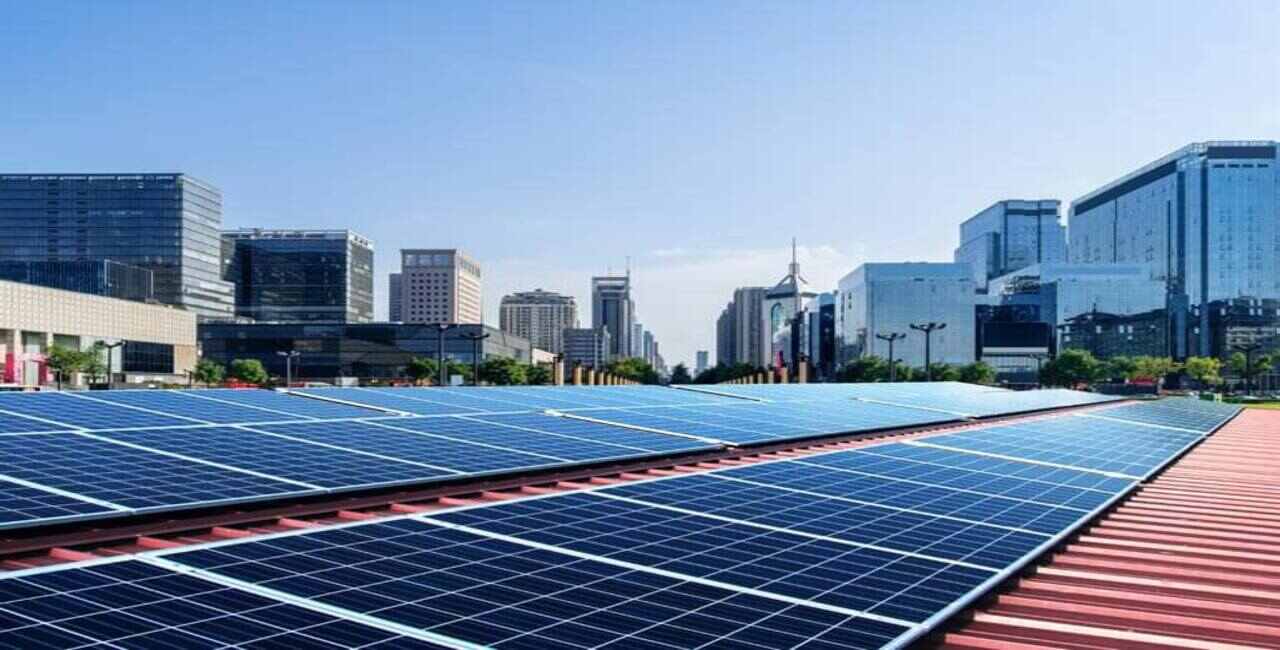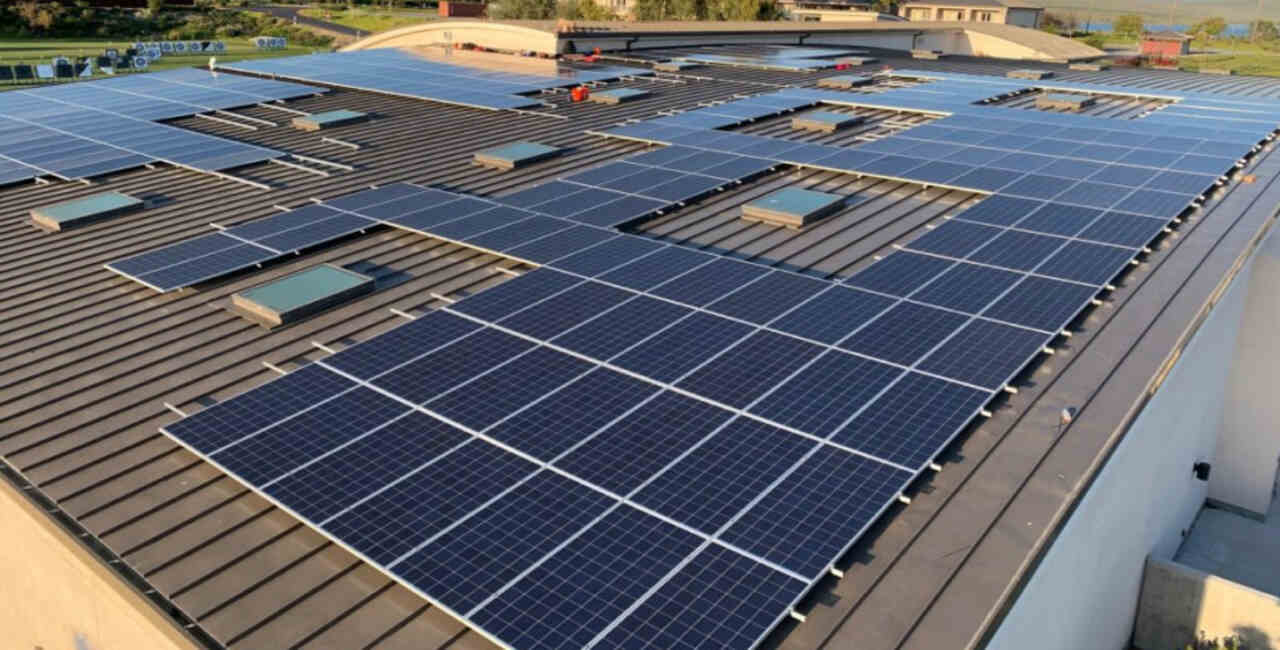How Are Commercial Solar Projects Financed?

Commercial solar projects refer to the implementation of solar energy systems in non-residential spaces, such as businesses, industries, and institutions. These projects harness the power of sunlight to generate electricity, providing a sustainable and environmentally friendly alternative to traditional energy sources. The significance of commercial solar projects lies in their capacity to reduce carbon footprints, lower energy costs, and contribute to a more sustainable and resilient energy infrastructure.
Financing commercial solar projects involves the mobilization of funds to cover the costs associated with designing, installing, and maintaining solar energy systems for businesses. The commercial solar sector has witnessed a surge in innovative financing mechanisms, allowing companies to adopt solar solutions without incurring prohibitive upfront expenses. Various financing options, including debt and equity structures, power purchase agreements (PPAs), and emerging trends like crowdfunding platforms and green bonds, play a pivotal role in facilitating the transition to solar energy for businesses of all sizes. Understanding these financing mechanisms is crucial for unlocking the potential benefits of solar energy and navigating the evolving landscape of sustainable business practices.
Types of Commercial Solar Projects
As the global shift toward sustainable energy intensifies, commercial solar projects have emerged as a key player in the transition to cleaner and more environmentally responsible business practices. These projects encompass a variety of innovative approaches, each tailored to the diverse needs and spaces of commercial enterprises.
In this section, we delve into the various types of commercial solar projects, ranging from rooftop installations that maximize existing infrastructure to ground-mounted solar farms that harness open land for optimal energy production. From the integration of solar carports to the community-driven model of shared solar projects, businesses now have a spectrum of options to choose from, allowing them to customize their renewable energy solutions.
Understanding these distinct types of commercial solar projects is pivotal for organizations seeking to embark on a sustainable energy journey and make informed decisions aligned with both their environmental and operational goals.
- Rooftop Solar Installations: Rooftop solar installations involve the placement of solar panels on the rooftops of commercial buildings. This type of project capitalizes on available rooftop space to generate solar energy for the specific needs of the business. Rooftop solar is popular for its efficient use of existing infrastructure, providing a decentralized and on-site energy solution.
- Ground-Mounted Solar Farms: Ground-mounted solar farms entail the installation of solar panels on open land, away from the confines of a building structure. This type of commercial solar project is suitable for larger businesses or industries with ample land resources. Ground-mounted solar farms can harness significant sunlight, producing substantial energy output and contributing to the overall sustainability goals of the business.
- Solar Carports: Solar carports combine the functionality of shaded parking structures with solar energy generation. These projects involve the installation of solar panels on elevated structures that serve as carports. Solar carports not only provide shelter for vehicles but also generate clean energy, making them a dual-purpose and space-efficient solution for commercial enterprises.
- Community Solar Projects: Community solar projects enable businesses to participate in solar energy initiatives without having panels directly on their premises. In this project, a solar array is installed in a centralized location, and businesses or individuals can subscribe to or purchase a share of the energy generated. This approach fosters community involvement in renewable energy and allows businesses to benefit from solar power without the need for on-site installations.
Understanding the diverse types of commercial solar projects is essential for businesses seeking to align their energy needs with sustainable practices. Each type offers unique advantages, allowing companies to choose the most suitable solution based on their specific requirements and available resources.
What Are the Advantages of Commercial Solar Projects?

Embracing solar energy is no longer merely a choice for businesses; it's a strategic imperative in an era defined by sustainability and responsible resource management. Commercial solar projects offer a myriad of benefits that extend far beyond simply reducing utility bills.
In this section, we explore the multifaceted advantages that businesses stand to gain from integrating solar energy solutions into their operations. From mitigating environmental impact to bolstering financial resilience and enhancing corporate reputation, the benefits of commercial solar projects are transformative, aligning with both economic objectives and ethical imperatives.
As businesses navigate an increasingly complex and interconnected global landscape, understanding and leveraging these benefits becomes essential for driving sustainable growth and securing a competitive edge in a rapidly evolving market.
- Environmental Sustainability: One of the primary advantages of embracing commercial solar projects is their profound impact on environmental sustainability. By harnessing the power of the sun to generate clean and renewable energy, businesses significantly reduce their reliance on fossil fuels, subsequently lowering carbon emissions and mitigating their environmental footprint. Commercial solar initiatives contribute directly to the global effort to combat climate change, offering a tangible and eco-friendly solution for businesses committed to corporate responsibility.
- Cost Savings on Energy Bills: Commercial solar projects offer a compelling economic benefit through substantial cost savings on energy bills. By generating on-site electricity from sunlight, businesses can offset their reliance on grid power and reduce or eliminate electricity expenses. As solar technology advances, the initial investment in solar installations continues to decrease, making it an increasingly cost-effective solution for businesses looking to enhance their financial sustainability while reducing operational expenses.
- Positive Brand Image and Corporate Social Responsibility: Investing in solar energy projects demonstrates a commitment to corporate social responsibility (CSR) and enhances a business's overall brand image. Consumers and stakeholders increasingly prioritize environmentally conscious practices, and companies that integrate commercial solar projects showcase their dedication to sustainable operations. Such initiatives not only attract environmentally conscious customers but also foster a positive corporate reputation, setting businesses apart in a competitive market.
- Revenue Generation through Excess Energy Production: Beyond cost savings, commercial solar projects have the potential to become revenue-generating assets. When solar installations produce more energy than a business consumes, the excess electricity can be fed back into the grid or sold through various mechanisms. This additional revenue stream not only enhances the financial viability of the solar project but also provides businesses with an opportunity to contribute to the broader energy ecosystem while enjoying financial returns.
Who Are the Key Players In a Commercial Solar Project?
Commercial and Industrial (C&I) solar projects require collaboration among various stakeholders to ensure successful development. Here's a breakdown of key players involved in different aspects of a commercial solar project:
The Customer
- The decision-maker for solar installation, although not always the occupant. Coordination with both the owner and occupant is crucial.
The Property Owner
- The primary stakeholders deciding on the investment in the solar project, vary from small businesses to large corporations, government entities, schools, and non-profits.
The Building Tenant (sometimes)
- Coordination may be needed with the tenant during the installation, especially if they play a role in project development or have lease agreements related to solar power.
Parties Involved in Implementing the Solar Project:
Prime Contractor / EPC
- EPC (Engineering, Procurement, and Construction): Manages the project from start to finish, coordinating various aspects and acting as the customer's point of contact.
Solar Engineering
- Specialized in ensuring the project meets electrical, civil, and structural requirements, managing permitting, and ensuring code compliance.
Solar Design
- Select components, determine system configuration, and utilize solar design software for efficient planning, ensuring a quality design.
Solar Installation / Construction
- Implementing the project, ensuring attention to detail for a system that meets commissioning standards.
Project Approval
- Local government entities ensure the project complies with codes and standards through the permitting process.
- Grants permission for grid connection assesses system impact, and approves system operation.
Commissioning Firm
- Independent third party ensuring the project aligns with expected performance adheres to safety requirements, and meets quality standards.
Financing Partners
- Banks or firms specializing in solar financing, provide funding for the project. Alternatively, companies may choose self-financing.
Financing Options for Commercial Solar Projects

Financing is a critical aspect of commercial solar projects, influencing their feasibility and success. Various options cater to the diverse needs of businesses looking to invest in solar energy. Here's an exploration of key financing avenues for commercial solar projects:
Self-Financing:
- Description: Businesses with available capital can choose to fund the solar project internally.
- Pros: Complete ownership, the potential for quicker decision-making.
- Cons: Ties up capital, may limit financial flexibility.
Power Purchase Agreements (PPAs):
- Description: Third-party developers install and operate the solar system on the customer's property. The customer purchases the generated power at agreed-upon rates.
- Pros: No upfront costs, predictable energy costs, minimal operational responsibility.
- Cons: Long-term commitment, the potential for higher overall costs.
- Description: Similar to PPAs, the customer leases the solar system instead of purchasing the power. The lease provider maintains ownership and operation responsibilities.
- Pros: No upfront costs, reduced risk, potential for immediate savings.
- Cons: Long-term commitment, may not maximize financial benefits.
Commercial Property Assessed Clean Energy (C-PACE):
- Description: Financing is secured through a property tax assessment. Repayments are made as part of property tax bills.
- Pros: Low-cost, long-term financing, transferable to new property owners.
- Cons: Availability is limited by location, tied to property tax.
Equipment Financing:
- Description: Businesses secure loans to purchase solar equipment outright.
- Pros: Ownership from day one, potential for tax benefits.
- Cons: Upfront costs, responsibility for maintenance.
Green Bonds:
- Description: Companies issue bonds to raise capital for sustainable projects, including solar installations.
- Pros: Attracts environmentally conscious investors, and potentially lower interest rates.
- Cons: Limited market, complexity in issuing and managing bonds.
Federal and State Incentives:
- Description: Governments offer incentives such as tax credits, grants, and rebates to encourage solar investments.
- Pros: Financial support, and reduced project costs.
- Cons: Dependent on government policies, may change over time.
Energy Savings Performance Contracts (ESPCs):
- Description: Energy service companies (ESCOs) finance and install the solar project. Repayments come from the energy cost savings achieved.
- Pros: No upfront costs, guaranteed savings.
- Cons: Long-term commitment, and limited control over system operation.
Utility Energy Services Contracts (UESCs):
- Description: Similar to ESPCs, but primarily used for federal government projects. Utilities provide financing for energy efficiency projects, including solar.
- Pros: No upfront costs, guaranteed savings.
- Cons: Limited to federal government projects.
Choosing the right financing option requires a careful evaluation of business goals, financial capacity, and risk tolerance. Collaboration with financial experts and understanding the long-term implications of each option is crucial for a successful commercial solar project.
Government Incentives and Grants You Should Know About
Government incentives form a cornerstone of support for the development of commercial solar projects, playing a pivotal role in encouraging businesses to transition towards renewable energy. These incentives are diverse and often tailored to promote solar adoption:
Investment Tax Credits (ITC): A federal tax credit that allows businesses to deduct a percentage of the eligible costs of installing a solar energy system from their federal taxes.
Cash Grants: Direct financial support provided by the government to businesses investing in solar projects, offering an alternative to tax credits.
Renewable Energy Credits (RECs): Tradable certificates representing the environmental attributes of one megawatt-hour of electricity generated from renewable sources, providing additional revenue opportunities.
Accelerated Depreciation: Tax policies allow businesses to depreciate the value of their solar assets more rapidly, accelerating the recovery of upfront costs.
Grant Programs: Direct monetary grants provided by government agencies at various levels to support the development and implementation of commercial solar projects.
Impact of Incentives on Project Viability
The availability of government incentives significantly enhances the financial viability of commercial solar projects. These incentives serve as powerful catalysts for businesses looking to invest in sustainable energy solutions. Key impacts include:
Cost Reduction: Incentives effectively reduce the initial investment costs, making solar projects more financially feasible for businesses. The reduction in upfront expenses improves the return on investment (ROI) and shortens the payback period.
Enhanced Financial Returns: Government incentives contribute to the overall revenue stream of commercial solar projects. Through mechanisms like tax credits, businesses not only save on installation costs but also benefit from ongoing financial advantages throughout the project's operational life.
Risk Mitigation: Incentives provide a level of risk mitigation for businesses by offsetting some of the uncertainties associated with solar investments. This can be especially critical in fostering confidence among investors and financiers.
Market Competitiveness: Businesses that leverage government incentives gain a competitive edge in the market. Not only do they demonstrate a commitment to sustainability, but they also position themselves as financially savvy enterprises.
Understanding and strategically leveraging available government incentives are essential steps for businesses seeking to maximize the impact and financial benefits of their commercial solar projects. The alignment of project goals with existing incentive programs can significantly contribute to the success and sustainability of solar initiatives.
Conclusion
The financing landscape for commercial solar projects is diverse and dynamic, with various options empowering businesses to embrace sustainable energy solutions. From traditional loans and equity financing to innovative models like crowdfunding and green bonds, the possibilities are vast. Government incentives play a crucial role, in making solar adoption financially attractive.
As businesses navigate this evolving terrain, understanding the benefits, engaging key stakeholders, and leveraging available incentives are essential. The path to a greener future is not only environmentally responsible but also economically sound, ushering in an era where the financial viability of commercial solar projects aligns seamlessly with the imperative for sustainable business practices.

